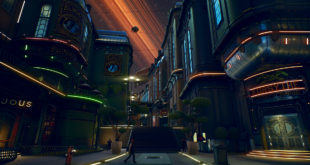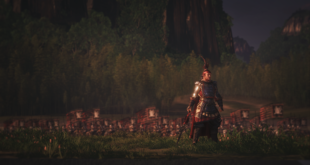What would it take to be a perfect games designer? Boiling it down to a few simple rules is not easy, but that’s exactly the kind of problem game designers have to solve.
A game design has to have both substance and style. Without style the game has no charm and no one will play it. Without substance, there is no game. There are two corresponding types of designer – let’s call them Otaku and Jedi.
The Otaku are the game geeks, the engineers, the crafters of substance. Their tools are spreadsheets, metrics and fundamental principles. They deconstruct, analyse, synthesise and reconstruct. They deal in facts and figures, feedback and damping, point and counterpoint, stats and formulae.
They don’t just understand what works; they know why it works. This allows them to create gameplay that mostly works first time.
Pure Otaku, left unfettered, will produce designs so dry and geeky that no normal human would want to touch them. Players need shallower, shiny stuff to get them thoroughly hooked before the deep geek is released. Enter the Jedi.
TURN OF THE JEDI
The Jedi use their powers to conjure up designs, drawing on the spirit of all the entertainment media that ever existed. They wield their opinions like light sabres, cutting down their opponents’ ideas and sending forth their own creative outbursts.
Subjectivity, style and creativity are their domain, and they are masters of it, iterating their way gymnastically to great gameplay.
Good design requires talent (which you’re born with) and skills (which you can learn), but there are very few designers who have equally strong Otaku and Jedi talent – it’s the old art vs science, form vs function division.
It’s unfortunate because the two approaches are so complimentary that they multiply rather than add.
You’d think pairing an Otaku with a Jedi would work well, but they’re starting off standing on different planets and they’re unlikely to value each other’s point of view.
‘It’s combat mechanics that will make or break the game’. ‘No, storyline is the most important thing in the game, combat mechanics are just a hygiene factor’.
It’s much better to have that argument going on inside one person’s head because it takes ego out of the equation.
You can’t change your blind watchmaker-given talent, but you can improve your skills, albeit with diminishing returns. To maximise your value if you’re an Otaku you should first focus on Jedi skills – take an art or script writing course, play many more games, GM some paper RPGs, consume more culture, lots more.
Jedi should focus on Otaku skills – learn to program, embrace Excel, play board games to win, trawl the game metrics and forums, play a few games obsessively and listen to the Critical Thinker podcasts.
Unfortunately, everyone’s base value will be compromised to some extent by a whole host of foibles and behaviours caused by strengths that are overdone.
Where a Jedi designer’s passion is overdone and he uses anger to win his arguments he becomes a Sith designer.
Sith are so dangerous they can threaten the existence of entire studios. Many other designers will back away – sometimes far, far away – and his opinions will end up unfiltered in the game. There is a potential Sith in all of us and it must be kept chained up and locked away.
THE RIGHT STUFF
No one is right 100 per cent of the time and crippled is the designer who thinks he is. Three overconfident designers who are right 90 per cent of the time but can’t agree will be outperformed by three self-doubters who are only right 45 per cent of the time, but pick their best answer (Otaku will be reaching for their calculators at this point).
Stubbornness will halve your value to the team and put a cap on how far your career can progress.
Both types of designer also need to achieve detachment from their ideas. They have to push their babies out there and let them sink or swim. If you love your ideas too much you’ll resist others modifying them, even if it’s an improvement, and you may even let loose your inner Sith to defend them.
It’s ego that drives stubbornness and attachment to your own ideas. It makes you take more than your fair share of the design discussion space. It makes your own flaws invisible to you.
When reality doesn’t match your ego’s unrealistic expectations it drives inferiority complexes making you over-sensitive to criticism, unable to self-improve and prone to angry outbursts. Ego may be just great for self-publicity, but it is a complete mind killer that is in every case bad for games design.
Game this formula and you’ll make better games:
Designer value = (Otaku Talent + Skills) * (Jedi Talent + Skills)
Ego

 MCV/DEVELOP News, events, research and jobs from the games industry
MCV/DEVELOP News, events, research and jobs from the games industry



